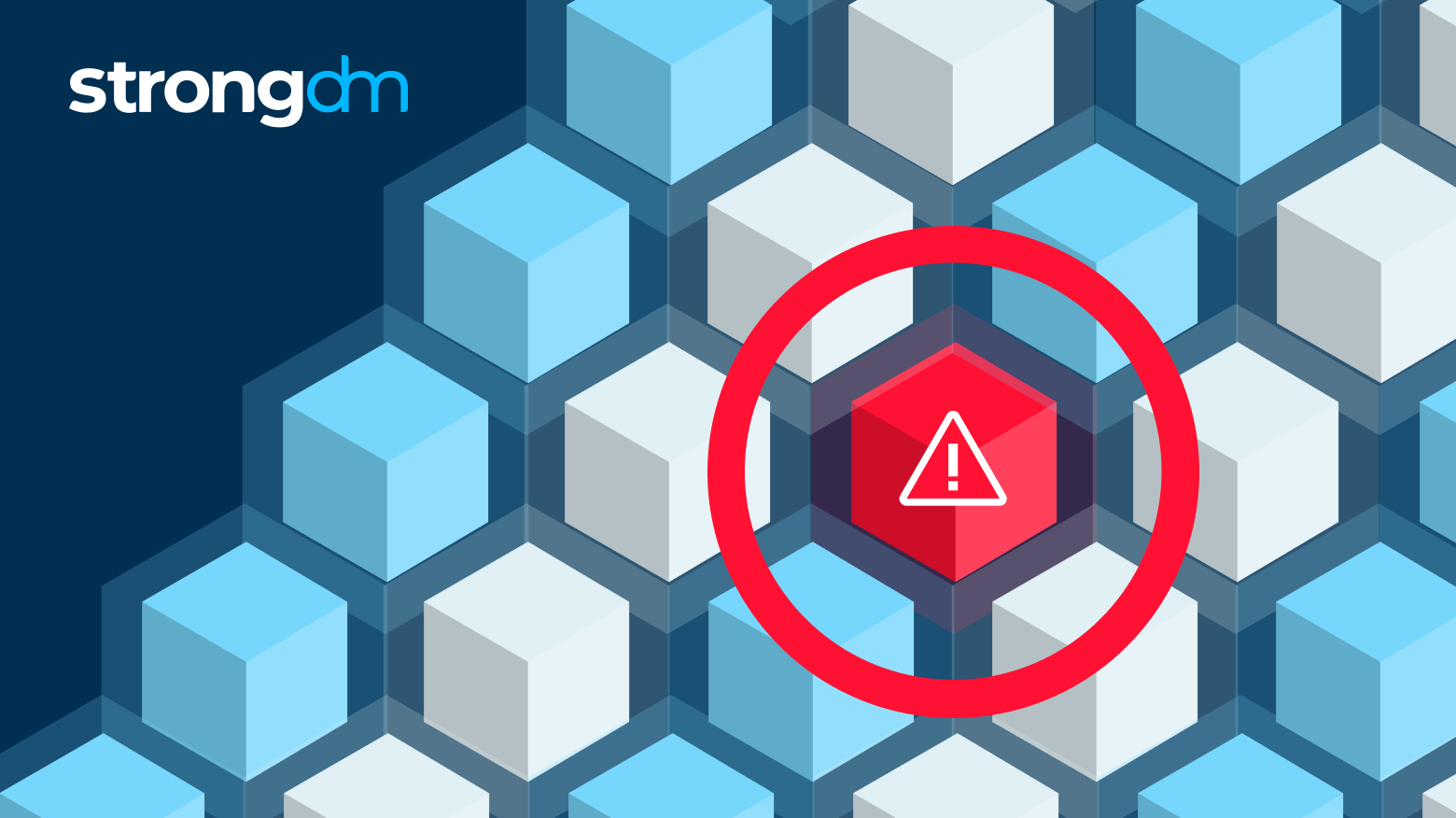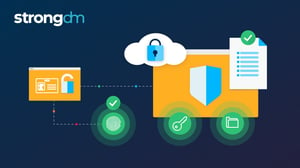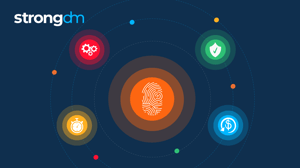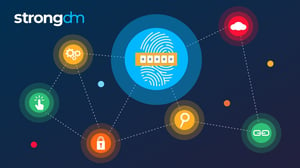Unauthorized Access: Types, Examples & Prevention


Written by
John MartinezLast updated on:
June 25, 2025Reading time:
Contents
Built for Security. Loved by Devs.
- Free Trial — No Credit Card Needed
- Full Access to All Features
- Trusted by the Fortune 100, early startups, and everyone in between
Unauthorized access presents significant risks to businesses, jeopardizing sensitive data and disrupting operations. Cybercriminals exploit vulnerabilities through sophisticated phishing attacks and API security gaps, making it imperative for organizations to adopt robust security measures. This blog post highlights the critical need to defend against unauthorized access and shares proven as well as advanced tactics to prevent it.
What Is Unauthorized Access?
Unauthorized access is the unauthorized entry or use of an organization's systems, networks, or data by individuals without permission. It's a common way for bad actors to exfiltrate data, inject malicious code, and take advantage of all types of breaches, and can have severe consequences for an enterprise and its customers.
The Risk and Impact of Unauthorized Access
The risk your business faces from unauthorized access goes beyond just data breaches, however. The results of unauthorized access can lead to financial losses, reputation damage, and legal implications.
Why Unauthorized Access Matters
Individuals who access your organization's systems or data without permission can:
- Steal or manipulate sensitive information, including customer data, financial records, intellectual property, and trade secrets.
- Disrupt day-to-day business operations, causing downtime, loss of productivity, and potential financial losses.
- Violate compliance regulations and legal requirements, such as the General Data Protection Regulation (GDPR) or the Health Insurance Portability and Accountability Act (HIPAA). If your organization is found non-compliant, you may face legal penalties and will likely require significant, arduous auditing processes.
Types of Unauthorized Access
Cybercriminals use various techniques to breach organizational defenses and gain unauthorized access, including these common methods:
- Brute force attacks: Cybercriminals use automated tools to test many combinations of usernames and passwords until they find the right credentials to access to your organization's systems.
- Phishing: One of the most common ways cybercriminals try to trick people into revealing their login credentials is through deceptive emails, messages, or websites that look like they’re from legitimate sources.
- Social engineering: This involves manipulating people through psychological tricks to gain unauthorized access. Social engineering tactics can include impersonation, pretexting, or baiting.
Unauthorized Access Examples
With so many cases of unauthorized access in recent years, it’s hard to keep up. Here are some recent high-profile unauthorized access examples:
Trello: In January 2024, attackers scraped the data of 15 million users from the Trello site and posted it on the dark web.
Bank of America: A ransomware attack starting in November 2023 exposed the data of about 57,000 Bank of America customers.
Indian Council of Medical Research: A data breach exposed health information of approximately 815 million Indian citizens in October 2023, making it one of the largest unauthorized access examples in India’s history.
Ontario Birth Registry: In September 2023, attackers accessed health information of around 3.4 million people.
Norton Healthcare: In May 2023, unauthorized access exposed personal information of roughly 2.5 million patients.
5 New and Dangerous Methods of Gaining Unauthorized Access
While phishing remains one of the most common unauthorized access examples, cybercriminals are becoming more sophisticated by the day. Attackers constantly develop and use new tactics to bypass security measures. Some of the latest threats include:
1. AI-Powered Phishing Campaigns
Phishing campaigns have become more sophisticated as cybercriminals use AI to create more convincing and personalized phishing emails, messages, or websites. These campaigns can slip past traditional email filters and deceive even tech-savvy individuals into revealing their login credentials or other sensitive information.
2. Exploiting API Access Vulnerabilities and Broken User Authentication
The complexity that makes APIs (Application Programming Interfaces) customizable also introduces the chance of security misconfigurations. Attackers can access data by exploiting unique vulnerabilities, such as exposed endpoints from broken object-level authorization, broken authentication mechanisms, weak input validation, or excessive data exposure
3. DNS Tunneling
DNS (Domain Name System) tunneling involves bypassing network security measures to gain unauthorized access. Attackers hide unauthorized data within DNS queries or responses to create secret communication channels and extract sensitive information from your organization's network without detection.
4. Cloud or Network Hopping
Cloud or network hopping occurs when cybercriminals move laterally within your organization's network or between different cloud environments. They exploit vulnerabilities or weak access controls to navigate through your organization's infrastructure and access sensitive data or systems.
5. Compromising Access to Third-party Service Providers
Another often overlooked unauthorized access example involves third-party service providers who have access to your organization's systems or data to offer their services. If these service providers are compromised, cybercriminals can gain unauthorized access to your organization's sensitive information through them.
5 Proven Tactics to Block and Prevent Unauthorized Access
Implementing effective security measures helps protect your organization's systems and data against unauthorized access. Here are some examples of proven tactics to protect your system:
1. Implement Strong Password Policies and MFA
A simple yet effective method of how to prevent unauthorized access is by enforcing strong password policies. Require employees to use complex and unique passwords, regularly change them, and avoid using the same passwords across multiple accounts.
Implementing Multi-Factor Authentication (MFA) adds an extra layer of security by requiring users to provide additional verification beyond passwords, such as a fingerprint scan or a unique code sent to a mobile device. The safest MFA is FIDO2 MFA, a passwordless authentication that uses unique cryptographic login credentials, preventing any password-based attack.
💡Make it easy: StrongDM provides detailed audit logs and monitoring capabilities to track user access and authentication events, including MFA attempts and failures, to ensure compliance and detect suspicious activity.
2. Regularly Update and Patch Systems
Software vendors often release updates and patches to fix security vulnerabilities. Regularly updating and patching software systems is a reliable way to prevent unauthorized access. You should promptly apply updates so your systems are protected against known vulnerabilities.
💡Make it easy: Enforce security policies with StrongDM to ensure that only updated and compliant devices can connect to your sensitive data.
3. Use Advanced Encryption Techniques
Encryption lets you protect sensitive data from unauthorized access by making it unreadable without a unique digital encryption key. Encrypting data while it’s at rest and in transit ensures that even if cybercriminals gain access to the data, they won’t be able to read or use it.
💡Make it easy: Enforce StrongDM encrypts data while it’s in transit and integrates with systems that encrypt data at rest.
4. Network Segmentation and Microsegmentation
Network segmentation is breaking down your organization's network into smaller, isolated segments to minimize the impact of unauthorized access. If an attacker gains access to one segment, they will be confined there and won’t be able to move laterally to other parts of the network. Microsegmentation takes this further, creating even smaller segments within segments for additional isolation and control over network traffic.
💡Make it easy: Enforce network segmentation by using StrongDM to design a secure architecture that reduces your threat surfaces without creating roadblocks for staff.
5. Monitor and Analyze User Behavior
Monitoring and analyzing user behavior helps you spot suspicious activities and unauthorized access attempts. Advanced security tools can detect deviations from normal user behavior patterns, while continuously monitoring user behavior and analyzing patterns lets you proactively identify and respond to potential unauthorized access attempts before they cause significant damage.
💡Make it easy: StrongDM makes it easy for you to monitor database and server access in real-time, while robust logging lets you analyze user behavior and patterns.
5 Advanced Tactics to Block and Prevent Unauthorized Access
As attacks become more sophisticated, consider adopting more advanced strategies to combat cyber threats. Here are five advanced tactics to block unauthorized access:
1. Honeypots and Deception Technology
Honeypots are decoy systems or networks designed to lure attackers away from your actual systems and gather valuable information about their techniques and tactics. Deception technology goes beyond honeypots by deploying fake assets, such as files or credentials, to mislead attackers and detect unauthorized access attempts.
💡Make it easy: Secure your network with StrongDM’s Infrastructure Access Platform, which uses the highest security standards to keep hackers out.
2. Authorization Through Behavioral Biometrics
Behavioral biometrics analyze and authenticate users based on their unique behavioral patterns, such as typing speed, mouse movements, or touchscreen interactions. Behavioral biometrics provide a way to prevent unauthorized access even if an attacker has valid credentials that have been stolen.
💡Make it easy: Protect your organization with StrongDM’s comprehensive access management solutions and full-stack observability.
3. AI-driven Predictive Threat Intelligence
AI-driven predictive threat intelligence analyzes data to identify anomalies and predict potential threats in real-time, detecting and blocking unauthorized access attempts before they cause significant damage.
💡Make it easy: Protect Get advanced threat protection with StrongDM to provide simplified access and auditing across your entire stack.
4. Quantum Cryptography for Data in Transit
Quantum cryptography leverages principles from quantum physics to provide security that is theoretically unbreakable. It applies quantum key distribution to create and distribute encryption keys and exchange them so they cannot be intercepted or tampered with.
💡Make it easy: StrongDM can manage access to systems and applications where encryption keys are stored or used. Controlling access to these systems mitigates the risk of unauthorized access to encryption keys. Protect data in transit with end-to-end encryption across all protocols. StrongDM ensures data remains secure using TLS 1.2 and TLS 1.3 encryption protocols.
5. Context-Based Signals
Context-based signals use contextual factors like user location, device, time of access, and past behavior to determine whether access requests are legitimate and make informed decisions about granting or denying them.
How to Prevent Unauthorized Access with StrongDM
Controlling access to resources is an effective way to prevent unauthorized access to your organization’s data. StrongDM is a comprehensive access management platform that allows you to securely manage and control access to your systems, databases, and cloud resources.
For effective strategies on how to prevent unauthorized access attempts, StrongDM lets you implement strong access controls, enforce multi-factor authentication, and monitor and analyze user behavior. By providing granular access controls, StrongDM allows you to define who can access what resources, and under what conditions.
Don't leave your organization vulnerable to unauthorized access. Take control of your resources and protect your sensitive data with StrongDM. Learn more about controlling access to your resources with a demo of StrongDM today.
Next Steps
StrongDM unifies access management across databases, servers, clusters, and more—for IT, security, and DevOps teams.
- Learn how StrongDM works
- Book a personalized demo
- Start your free StrongDM trial


About the Author
John Martinez, Technical Evangelist, has had a long 30+ year career in systems engineering and architecture, but has spent the last 13+ years working on the Cloud, and specifically, Cloud Security. He's currently the Technical Evangelist at StrongDM, taking the message of Zero Trust Privileged Access Management (PAM) to the world. As a practitioner, he architected and created cloud automation, DevOps, and security and compliance solutions at Netflix and Adobe. He worked closely with customers at Evident.io, where he was telling the world about how cloud security should be done at conferences, meetups and customer sessions. Before coming to StrongDM, he lead an innovations and solutions team at Palo Alto Networks, working across many of the company's security products.
You May Also Like




